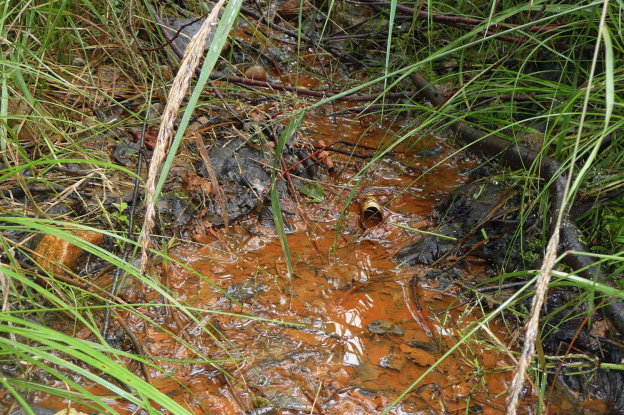
Sulfide mining: water quality baseline data needed
This week, researchers from the Minnesota Pollution Control Agency were gathering data on the Minnesota River. In 1988, at a time of similarly low flow for the river, researchers recorded the dissolved oxygen levels and now are going back to see if reductions in phosphorus have helped. You can only do this kind of research of the positive impact on water quality from stronger regulation if you have a good set of baseline data.
There is another place where there is a pressing need for baseline water quality data. As the Minnesota Department of Natural Resources works on the second draft environmental impact statement (EIS) for the proposed PolyMet mine, it has become clear that there is a lack of baseline data about water quality in the region.
There have been at least three waves of interest in copper-nickel sulfide mining in Minnesota, all coinciding with commodities price bubbles. In the 1970’s, burgeoning interest in copper mining led the State of Minnesota to conduct a number of studies and look at environmental and tax laws that would be needed if copper mines were opened. There are a host of documents from that period that are still relevant today. I checked one out entitled “Proposed Regional Environmental Monitoring System for Potential Copper-Nickel Mining in Northeastern Minnesota,” a 1974 study commissioned by the Minnesota State Planning Agency.
The actual document isn’t the best thing I’ve ever read. It’s missing essential data, isn’t very well written at times, and comments about the study included in the document are rather critical. However, the core of the study is this very important argument (emphasis is mine):
At the present time, the state of Minnesota has an opportunity to allow a copper-nickel mining industry to develop or not develop based on sound environmental analyses as called for by both NEPA and recent state environmental legislation. This is a unique opportunity, in that there are no previous environmental problems which can be attributed to this industry in Minnesota. Therefore, the State has the responsibility to determine precisely what the existing environmental baseline is, in order to provide a point of departure for future development. This baseline determination becomes even more important in the light of disturbances which have already occurred in the region such as iron mining and logging.
Nearly 40 years later, we still don’t have a lot of this essential baseline data, nor do we have a well-developed system to monitor changes in water quality. We’ve made some progress, though.
The White Iron Chain of Lakes Association (WICOLA) represents users and stakeholders who rely on the water quality of White Iron, Farm, South Farm, and Garden Lakes. These lakes are downstream of Twin Metals’s proposed mine, and upstream of the Kawishiwi River, which flows into the heart of the Boundary Waters Canoe Area Wilderness. They’ve initiated the Kawishiwi River Watershed Clean Water Project, which has begun to gather baseline data on water quality using funds from the Legacy Amendment and the MPCA. Many of the concerns about water quality in the White Iron Chain have nothing to do with mining, specifically, aquatic invasive species and septic systems. But the data gathered will help to establish a baseline for impacts on water quality if Twin Metals ever receives a permit to mine.
There is a need for a more comprehensive system of environmental monitoring if Minnesota moves toward permitting a copper-nickel sulfide mine. While pH, dissolved oxygen, and turbidity are good things to measure, we’ll need to continually monitor other aspects of water quality. Specifically, sulfates and dissolved metals are two damaging components of mining runoff that need to be included in any monitoring regime.
The insistence by mining proponents that we can “do it right” and avoid environmental impact is a nice sentiment, but as Reagan said “trust, but verify.” Legislation to create a comprehensive environmental baseline study for northeastern Minnesota is needed, as well as legislation to establish the infrastructure for ongoing environmental monitoring. If a company receives a permit to mine copper-nickel sulfide ore, they should also be responsible for funding the ongoing data collection and analysis. This should be included in the permit and factored into the financial assurance (damage deposit) required of a mine.
Not only is this good policy and a wise precaution, the response to the proposal itself is a good test of the sincerity of promises made by the mining companies. A mining company that wants to be a good environmental steward and good citizen will back this scientific approach. On the other hand, opposition to gathering baseline data and creating the infrastructure to verify mining company promises would be a clear signal that these are hollow pledges.
Thanks for your feedback. If we like what you have to say, it may appear in a future post of reader reactions.


